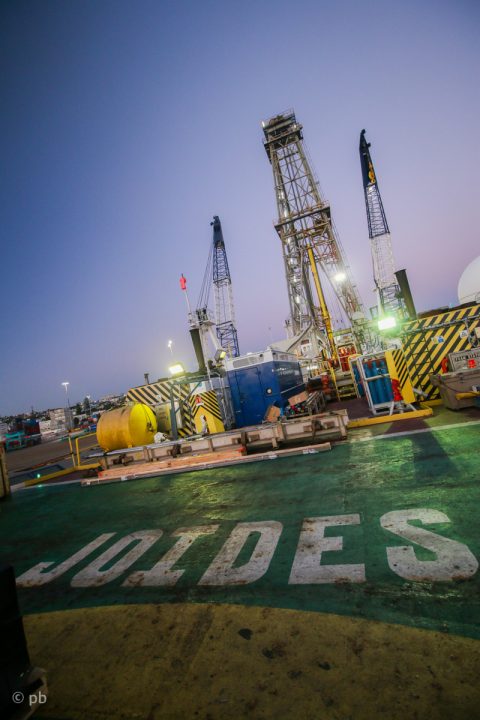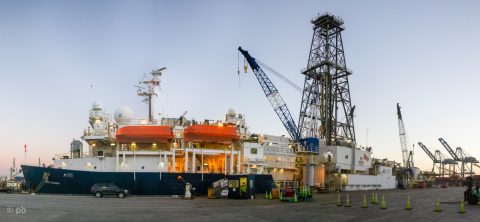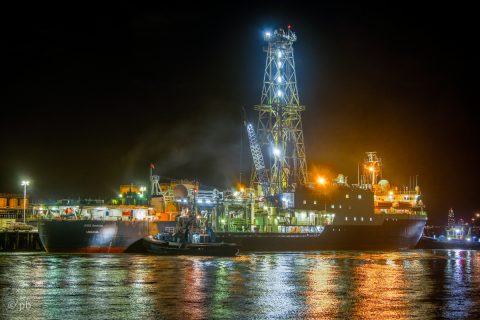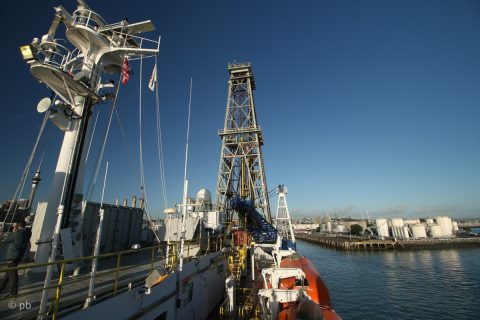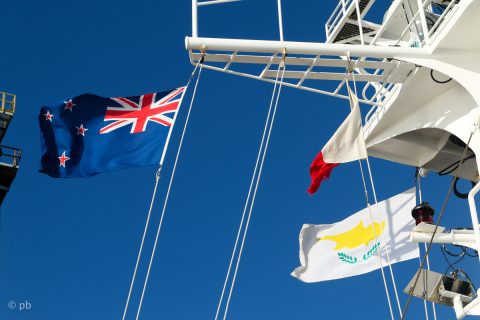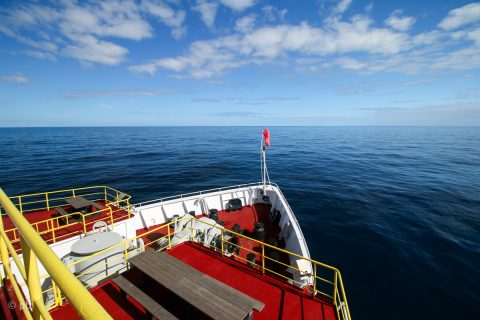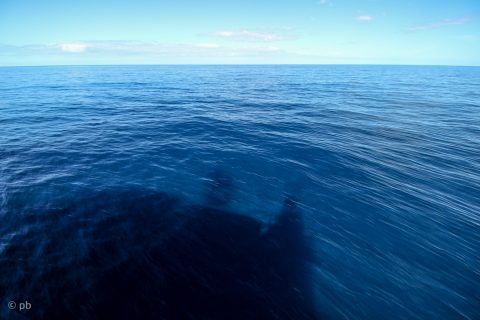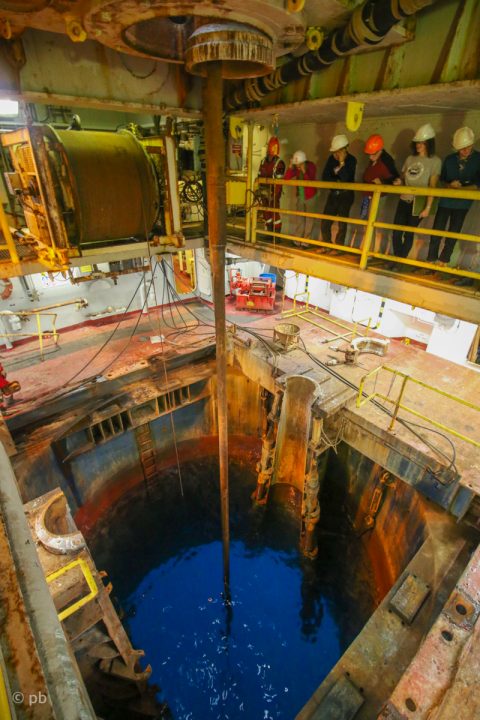May 10, 2018
Latitude: 34.867° S
Longitude: 179.061° E
Days at sea: 2
On Wednesday (May 9) morning, we left the port of Auckland and started our transit to Brothers Volcano. The seas were calm and the weather warm and sunny. Thus, the 24h transit was very smooth, there were no issues with seasickness and we arrived at Brothers Volcano in the morning of May 10. The time in port and on transit was extremely busy. Introductory talks on all the equipment and the laboratories of the JOIDES Resolution an on the procedures, methods and safety instructions to follow. This ship is a floating laboratory and is better equipped than some universities onland. We have microscopes, high-resolution core imagers, core logging tools, downhole logging tools, a wide range of geoanalytical instruments such as X-ray fluorescence (both stationary and portable for major element analyses) and diffraction (for mineral phase analyses), gas chromatographs, inductively-coupled plasma mass spectrometres for trace element analyses, a scanning electron microscope, a fluid-inclusion stage etc. Getting familiar with all that equipment is keeping us very busy and we have started to work on the first draft of the methods chapter of our IODP Report in which we will describe how we carry out our research at sea.
The aims of the expedition are quite challenging. There were only very few previous expeditions that drilled into hydrothermal systems at the seafloor and none of them were carried out into an active submarine island arc volcano. The amount of equipment brought to sea by IODP is tremendous and there is a chance that this expedition will become a breakthrough for seafloor drilling in this special environment. There are enough spare parts for multiple tries to drill the three planned sites to their dedicated depth of up to 800 metres below the seafloor. A new turbine-driven drilling system developed by our Japanese IODP colleagues will be deployed for the first time at sea and may provide us with a much better recovery compared to conventional rotary drilling.
Our first drill site (U1527) will be located on the northwestern caldera wall of Brothers Volcano. The thrusters to keep the “JR” on position are lowered and the dynamic positioning system will keep us on position. This means, we are drilling from a floating vessel without any fixed connection to the seafloor! The drill crew has already assembled the drill string and we surveyed the seafloor at the drilling site using a deep sea camera system attached to the drill string. For this occasion, the moon pool was opened. This is essentially a hole in the ship through which the drill string goes down to the seafloor. The water depth at our first drill site is about 1470 m and we just started drilling. This is very exciting for us and we expect to have the first core on deck later tonight.
pb
